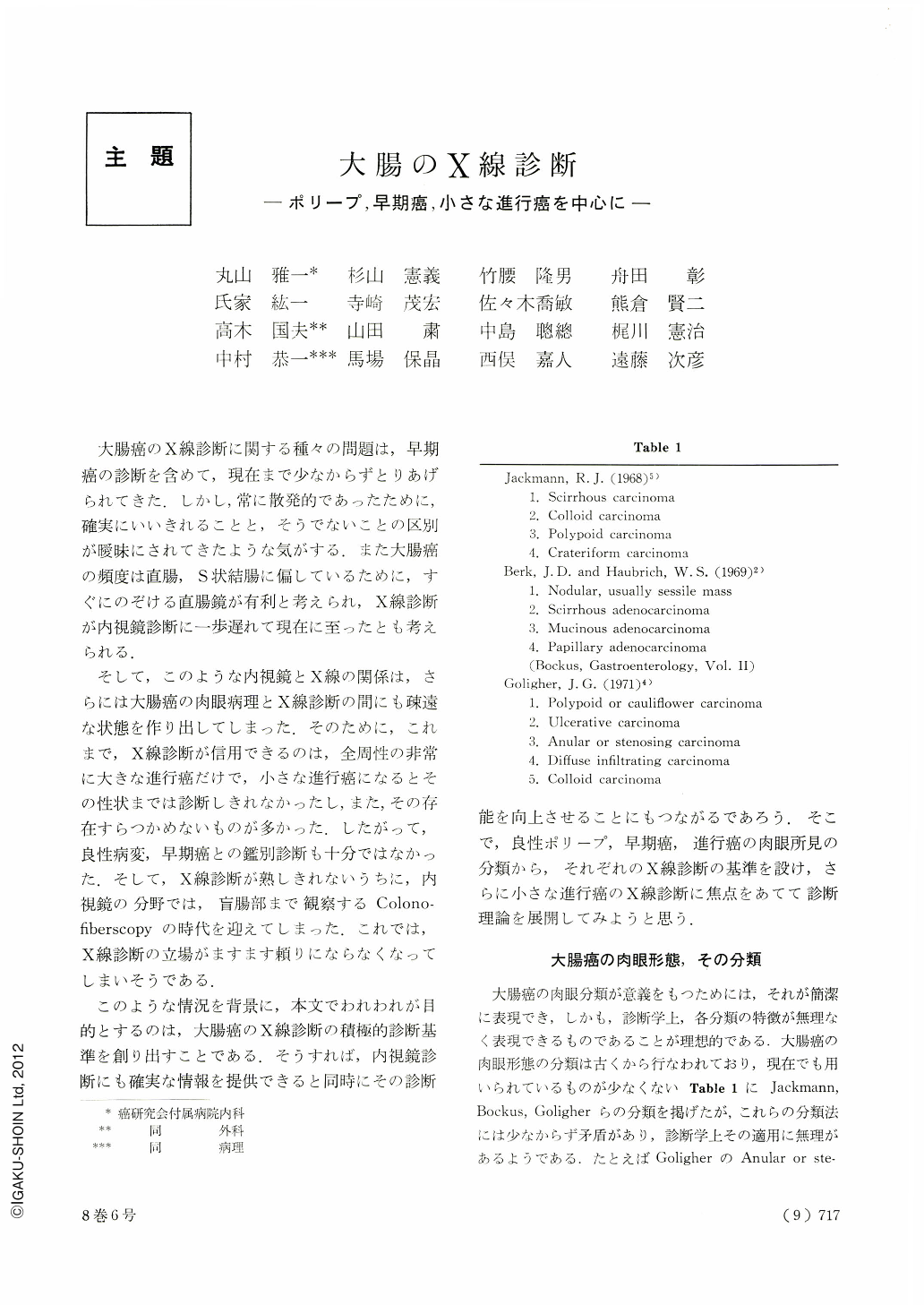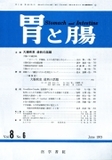Japanese
English
- 有料閲覧
- Abstract 文献概要
- 1ページ目 Look Inside
- サイト内被引用 Cited by
大腸癌のX線診断に関する種々の問題は,早期癌の診断を含めて,現在まで少なからずとりあげられてきた.しかし,常に散発的であったために,確実にいいきれることと,そうでないことの区別が曖昧にされてきたような気がする.また大腸癌の頻度は直腸,S状結腸に偏しているために,すぐにのぞける直腸鏡が有利と考えられ,X線診断が内視鏡診断に一歩遅れて現在に至ったとも考えられる.
そして,このような内視鏡とX線の関係は,さらには大腸癌の肉眼病理とX線診断の間にも疎遠な状態を作り出してしまった,そのために,これまで,X線診断が信用できるのは,全周性の非常に大きな進行癌だけで,小さな進行癌になるとその性状までは診断しきれなかったし,また,その存在すらつかめないものが多かった.したがって,良性病変,早期癌との鑑別診断も十分ではなかった.そして,X線診断が熟しきれないうちに,内視鏡の分野では,盲腸部まで観察するColonofiberscopyの時代を迎えてしまった.これでは,X線診断の立場がますます頼りにならなくなってしまいそうである.
As the first step of this paper, a macroscopic classification of polypoid lesions of the colon and rectum was attempted, based on cases of carcinoma (early and advanced) and polyp which had been experienced in the period from Oct. 1967 to Dec. 1971. A classification into four types (a, b, c, d) was proposed. In type a, benign pedunculated polyp and early cancer, Type Ⅰ (the definition of early gastric cancer was adopted) were included; in type b, benign sessile polyp and early cancer, Type Ⅰ, and Borrmann's Type Ⅰ (Borrmann's classification for advanced gastric cancer was adopted) were included; in type c, early cancer, Type Ⅱ a was included, and in type d, early cancer, Type Ⅱa+Ⅱc and Borrmann's Type Ⅱ were included.
In radiological differential diagnosis of benign polyp, early cancer and advanced cancer, it may be very important to confirm whether a polypoid lesion is sessile or pedunculated, and then whether it has an ulceration or depression. At the present time, the diagnosis of early cancer may be established if a polypoid lesion is sessile with the size of 10 to 20 mm.
In considering the diagnosis of early and advanced cancers from the standpoint of marginal deformity, lesions revealing bilateral deformity of the colonic margin are diagnosed easily. Most of them are larger than 1/2 circumference of the colon in their transverse diameters. But, the diagnosis of lesions revealing unilateral deformity and without deformity may be difficult.
Unilateral deformity was observed in 35.5% (11/31 lesions) of early cancer and in 18.3% (48/261) of advanced cancer. No deformity was observed in 61.3% (19/31) of early cancer and in 6.9% (18/261) of advanced cancer. It was suggested that the degree of unilateral deformity depended more or less on the depth of cancerous infiltration (Case 1~5).
Radiological finding of Borrmann's Type Ⅲ should be separated from that of Borrmann's Type Ⅱ. Borrmann's Type Ⅲ does not show shoulder defect or apple core sign.
The Universal Gyroscopic X-ray TV Apparatus which was developed recently in Japan (Toshiba DTUG) is a very useful equipment especially for examination of the colon and rectum. The diagnostic result with this equipment for one year was presented.

Copyright © 1973, Igaku-Shoin Ltd. All rights reserved.


